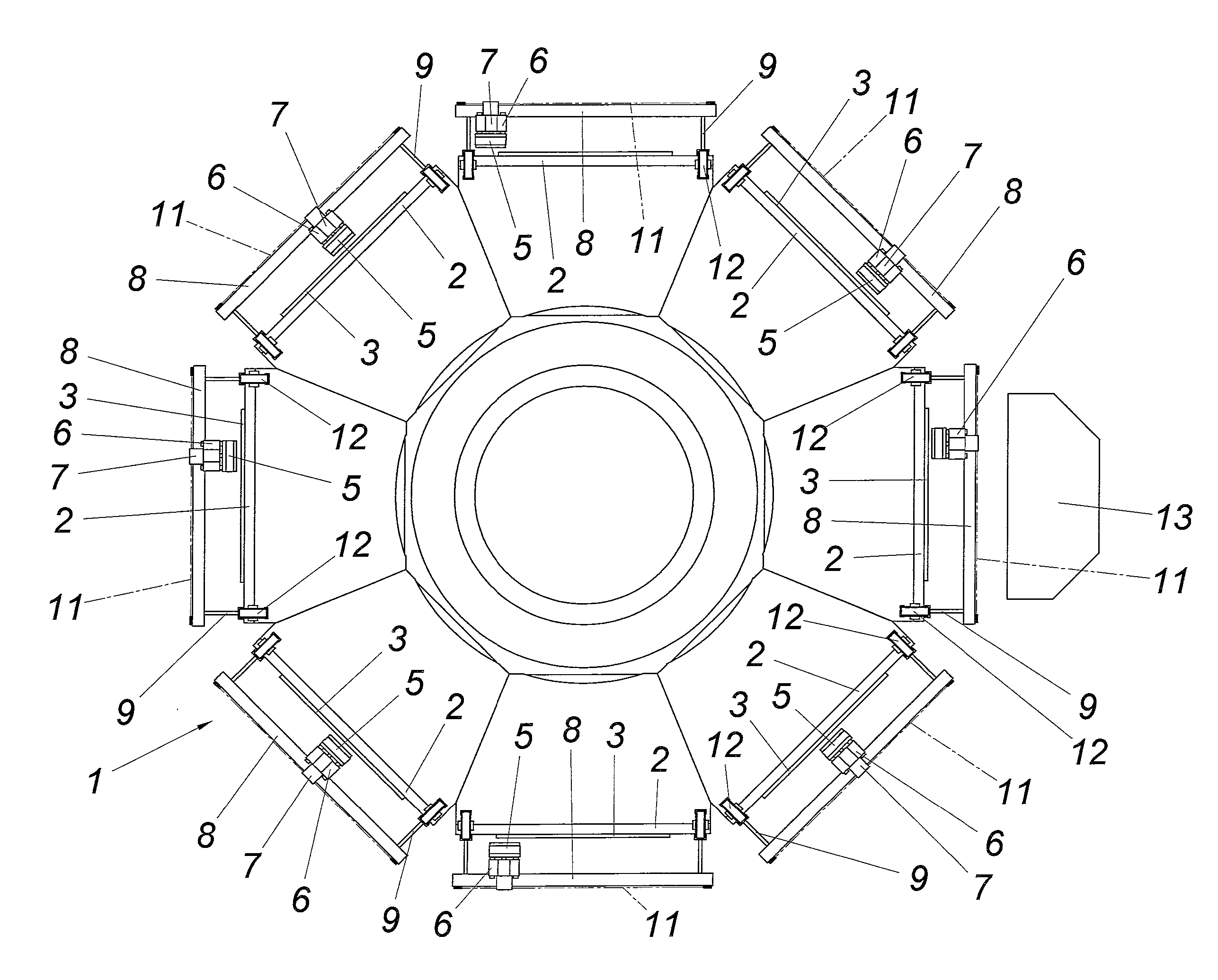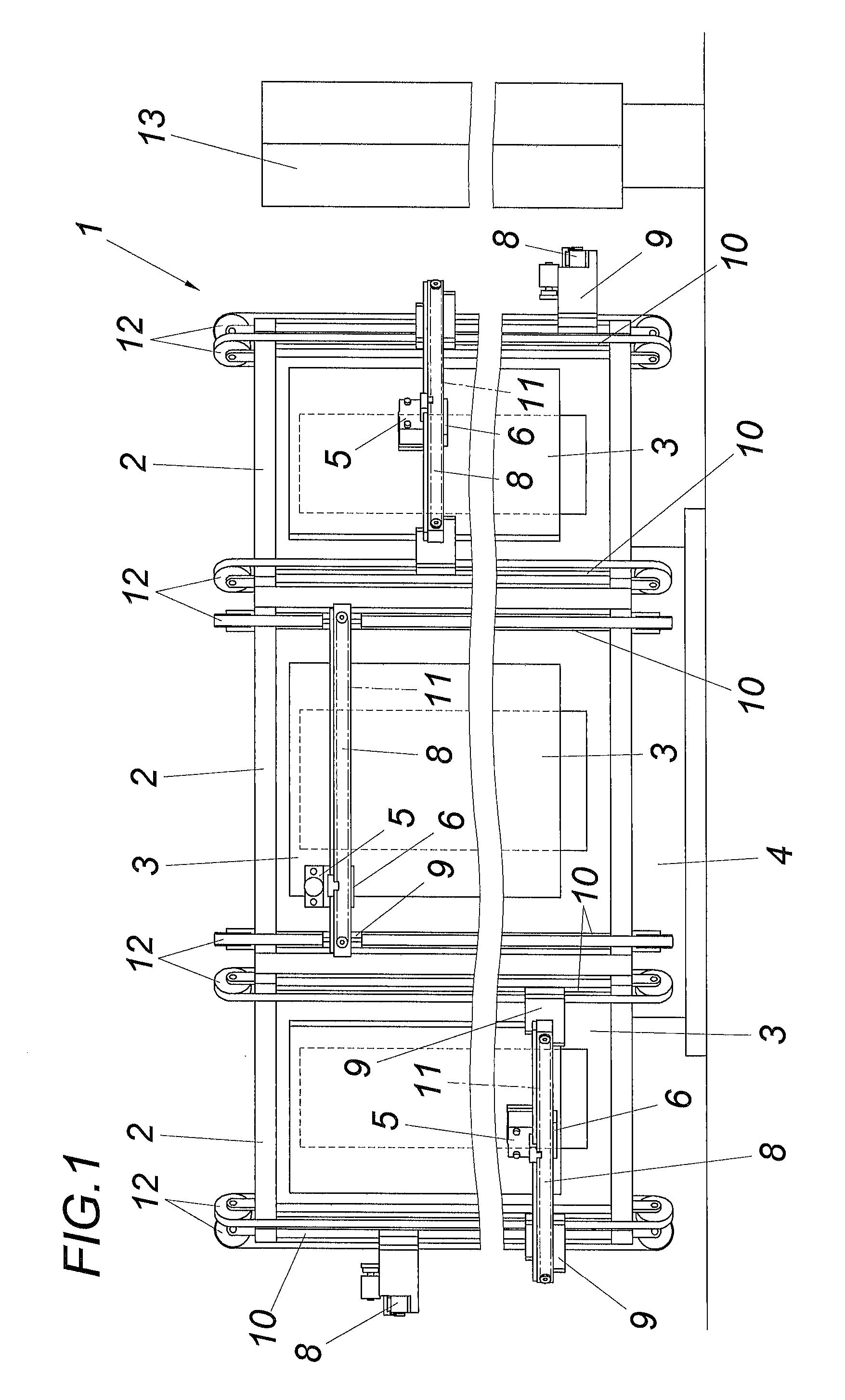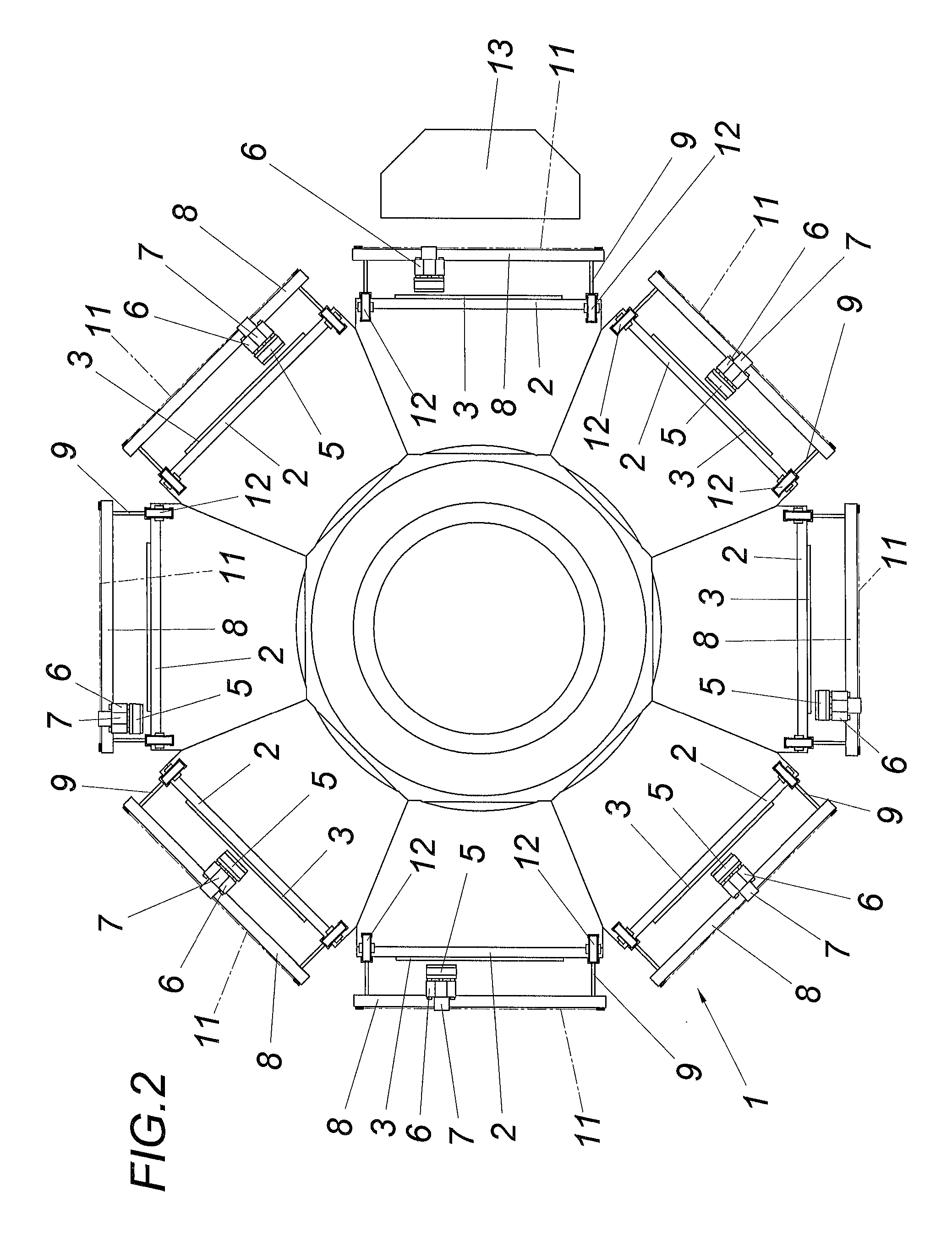Facility for repairing flaws in pieces of wood
a technology for repairing flaws and pieces of wood, which is applied in the direction of material analysis through optical means, measurement devices, instruments, etc., can solve the problems of not only the coordinates of flaws in relation to wood, but also those of wood in relation to the receptacle segment, so as to shorten the structural length required for the simultaneous processing of multiple pieces of wood
- Summary
- Abstract
- Description
- Claims
- Application Information
AI Technical Summary
Benefits of technology
Problems solved by technology
Method used
Image
Examples
Embodiment Construction
[0019]The illustrated facility for repairing flaws in pieces of wood has a conveyor device 1 made of a collar of receptacle segments 2 for the pieces of wood 3 to be processed, which are held in a conventional manner clamped in a vertical location in a manner correct for processing on the individual receptacle segments 2. According to the exemplary embodiment, the conveyor device 1 forms a rotor comprising the receptacle segments 2, which can be driven to revolve step-by-step about a vertical axis. The rotary bearing 4 receiving the rotor is indicated in FIG. 1.
[0020]Each of the receptacle segments 2 is assigned at least one tool carriage 5, which is displaceable in multiple axes, and which is provided in a manner known per se with corresponding tools for repairing flaws in the pieces of wood 3. The tool carriages 5 are mounted on a transverse carriage 6 with the aid of a positioning cylinder 7 so they can approach the pieces of wood 3 perpendicularly to the vertical spanning surfac...
PUM
| Property | Measurement | Unit |
|---|---|---|
| structural length | aaaaa | aaaaa |
| lengths | aaaaa | aaaaa |
| time | aaaaa | aaaaa |
Abstract
Description
Claims
Application Information
 Login to View More
Login to View More - R&D
- Intellectual Property
- Life Sciences
- Materials
- Tech Scout
- Unparalleled Data Quality
- Higher Quality Content
- 60% Fewer Hallucinations
Browse by: Latest US Patents, China's latest patents, Technical Efficacy Thesaurus, Application Domain, Technology Topic, Popular Technical Reports.
© 2025 PatSnap. All rights reserved.Legal|Privacy policy|Modern Slavery Act Transparency Statement|Sitemap|About US| Contact US: help@patsnap.com



